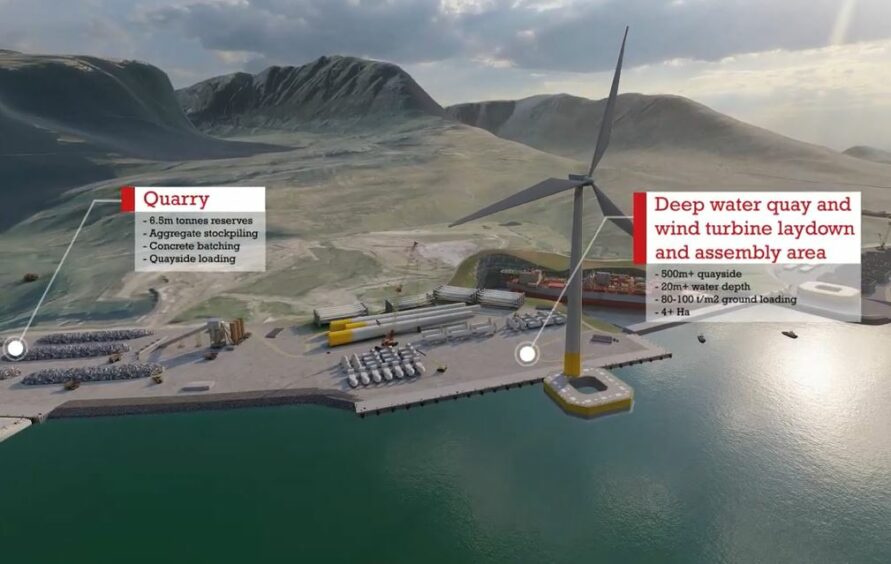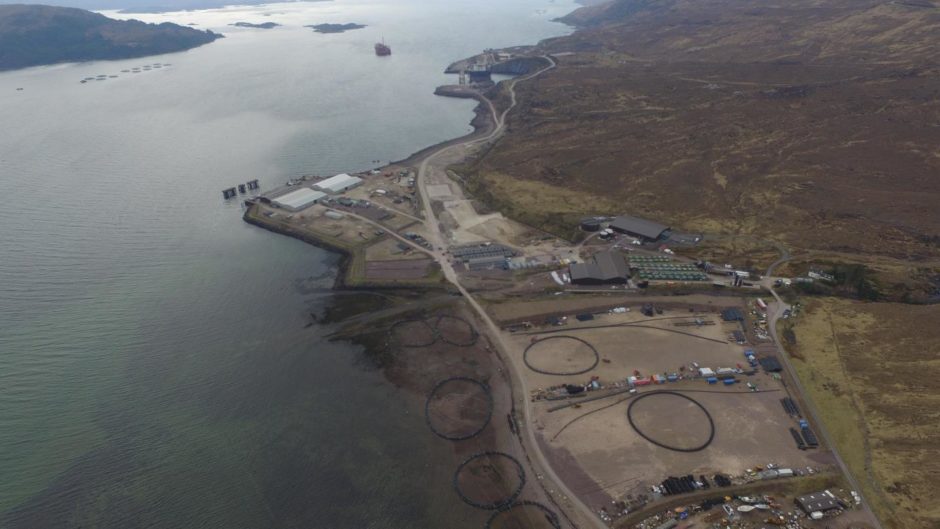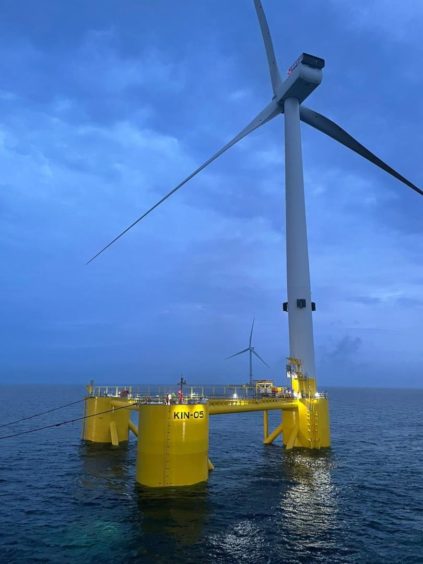
A boss at Kishorn Port is asking the offshore wind industry to give clarity around future floating turbine and foundation designs.
Colin Ortlepp says “certainty” is needed to spark the “next phase of development” at the major facility on the west coast of Scotland.
Going forward, Kishorn, with its origins in the early days of North Sea oil and gas, will be “heavily weighted towards offshore wind”, though it has decommissioning dreams too.
It made an “early foray” into the sector in 2013, and in recent years the port has been approached by “multiple developers, EPCI contractors, and foundation designers”.
They have come with a “myriad” of different project requirements, creating “real challenges” for the facility, operated as 50-50 joint venture by Ferguson Transport and Leith’s.
“I think we just might need to see some certainty and some narrowing down of designs and methodologies,” Mr Orlepp told the Floating Offshore Wind 2022 conference in Aberdeen on Wednesday.
He said: “We’ve got such a broad range of potential clients and structures that might be constructed.
“Speculatively, we have invested in Kishorn; we’ve gone through the consent process on land and marine and we’ve done some site investigations.
“That’s all speculative investment that has landed on the partners, but now to move forward we need commitments from government and developers.
“It’s all about certainty. That is the driver for the next phase of development at Kishorn.”
Just over a year ago Kishorn unveiled its new “masterplan” to capitalise on Scotland’s upcoming offshore wind boom.
The ambition is for the Wester Ross facility to be able to manufacture, laydown, assemble and load out of offshore wind structures, alongside its decommissioning activities.
It is hoped the redeveloped port, first used as a construction site for oil platforms in the 1970s, could create around hundreds of jobs in the coming years, but transparency on future requirements is a must.
And Mr Otrlepp, a director at Kishorn, warned that the cut off for ports to prepare for the bow wave of floating wind work at the end of the decade is “relatively” close
He said: “Commitment is the thing that we as a port need to move forward, implement our expansion plans, and have the facility ready. Time is marching on.”
With offshore wind still trying to decide upon the best plan of attack, many of the finer details of projects are yet to be decided.
There are multiple turbine and foundation designs under consideration by developers, placing various asks on ports and harbours.
In an effort to help facilities get ready, UK Government has set aside £160 million to “unlock further deep water port infrastructure” and support investment in factories to produce components for floating wind.
Asked where that money would best be spent, Greg Campbell-Smith, senior business developer at Principle Power, said: “Port infrastructure and development. We need a centralised scope of where we’re going to do the integration.
“It doesn’t matter what technologies you use, you’re still going to need to put a tower and a turbine on a foundation, and you’re still going to need that quayside facility. You could say that also for fixed wind, with the marshalling yards and so on.
“We need quayside facilities in Scotland that allow us to integrate the turbine, with the towers, with the floating units.”
Recommended for you


 © Kishorn Port Limited
© Kishorn Port Limited © Supplied by First Subsea
© Supplied by First Subsea